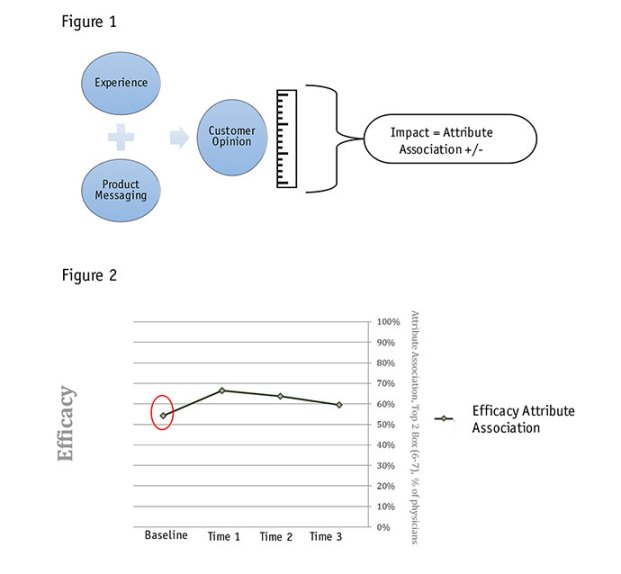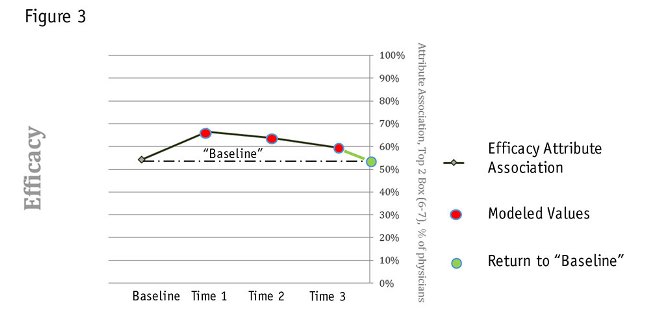There’s more you can do with that ATU
Editor's note: Michael Heasley is partner and chief research officer at Evolution Consulting and Research, Blue Bell, Pa.
Many times in market research we follow predetermined pathways for the development and execution of research plans and for the decision-making we base on the research outputs. While the research process works well in terms of delivering actionable results that successfully move brands forward, we can lose sight of some of the broader benefits derived from these valuable investments. While these studies deliver data that is intended to inform a specific analysis, there is also an opportunity to glean additional information and insights from the data beyond the standard set of expectations. Ultimately, we are unintentionally leaving important insights on the cutting-room floor. In my time on both the vendor and industry sides of this business, there has been more than one occasion when we, as marketing researchers, have been challenged to “do more with less” and to “see what we can do with what we already have.” When our marketing colleagues challenge us with these statements, we are afforded a chance to creatively think of ways to leverage collected data in new and better ways.
One common piece of research conducted is the awareness, tracking and usage (ATU) study. At risk of sounding pedantic, I’m sure we all know that the tracking portion of these survey-driven, quantitative studies is concerned with a product’s (and its competitor’s) messaging. Commonly, we take the results of ATU studies, evaluate the performance of a product’s messaging based on important attributes and adjust the messaging in the field to facilitate optimal performance. The goal is to modify the product’s messaging so it will impact and resonate with customers – that is, if it is not already too late to do so. This approach, while commonplace and effective, is what we would describe as reactive. However, perhaps it is possible to leverage data so that messaging can be proactively adjusted, avoiding an initial loss of customer interest. This type of application would constitute an “out-of-the-box” use of what is considered run-of-the-mill data.
In order to understand how these data can be proactively leveraged, there must be a discussion of the nature of product promotion (in pharma, this promotion is personal) and how the effect of this promotion (or its market impact) is measured.
How does the ATU measure a message’s impact, then? To simplify matters, let’s consider a product that is currently on the market. When a product is in-line, it is associated with a number of attributes by the primary target (physicians, for instance). This type of association can be easily measured through attribute association exercises. These associations are driven by the opinions of the customer regarding the product (e.g., to what degree a drug is associated with efficacy). As shown in Figure 1, the opinions, then, result from both the customer’s experience with the product (which is more influential in the long run, on the order of years) and from product promotion/messaging (which is most effective in the short run, on the order of months).

What we have, therefore, is an easily targeted, readily available and generally stable metric for determining the performance of a campaign in the short term (when considered vs. its baseline) or, more specifically, its impact on the market: attribute association. This argument is generally known and, admittedly, why we run ATUs. However, the question remains: How can we expect the market and, as a result, the metric, to react over time to a marketing message? If we can determine the nature of that relationship, we can hopefully use our attribute association data to help predict the behavior of the market from the messaging campaign. Then, perhaps, it would be possible to be proactive rather than reactive to changes in messaging impact.
It turns out that the rate at which a message’s impact changes is proportional to the amount of impact that message has. In simpler terms, the impact of a particular message is directly related to the number of times it is heard (over time). Thinking about it in terms of everyday examples, this relationship makes sense.
Let’s consider the launch of the original iPhone. Apple essentially took a phone, an iPod and an Internet device and put them together in a single product. The messaging was rich and ever-present, to say the least. When we first heard that description, it had a large degree of impact on the target audience: you and me. By the time a year had passed, we all knew what the product was and what it did. During that time, the impact of the message eroded and, to the point being discussed, began eroding from the first day it was delivered. The more often we heard the message, the less impact it had on us as more of its original impact is consumed. No matter the market under consideration (electronics, pharmaceuticals, what have you), this behavior is continually demonstrated. The relationship points to the usage of a certain type of model that is well-known and understood. What we have when it comes to messaging impact, it turns out, is an exponential relationship.
Get more out of a standard study
Let’s look at an example of how we can leverage both the existing data and the relationship described in the above section to see how we can get more out of a standard study with prescribed outputs.
For our example, take an ATU that has been run in an oncology market for years. One of the products in that market had efficacy data messaging present in the marketplace for quite some time. As such, the product and a particular efficacy attribute had a baseline association that had not changed much over time (see Figure 2, “Baseline” circled in red) and was performing at an associated rate of ~54 percent of physicians. This rate had not changed for more than two years prior to what we are referring to as the baseline.
At the time immediately after the baseline wave, the product’s messaging changed to include new information and to focus more on this particular efficacy attribute. At the next wave of this ATU, we can see that there is an immediate bump in terms of association as a result of this messaging change (~13 points). The next two waves of this study then show a decline in this association, trending back to the baseline of 54 percent (with continued promotion). That trend in declining association is the very thing in which we are interested. When we use the assumption that the decline, or decay, in this association is described best as an exponential relationship between attribute association and time, we can fit a model to the dynamical system represented by these data which will give us a way to predict when this particular messaging campaign will lose its effect. In other words, we can determine that any benefit from the change in messaging will reduce to the baseline value approximately two years after the messaging was introduced (based on the model we can and did compute – see Figure 3).

Our model follows almost exactly the actual behavior exhibited in the marketplace. As a result, this model can be used to determine when messaging for the product should be adjusted to regain the bump in impact from the prior adjustment. Using the data this way allows marketers to better understand how to prolong the effect of their campaigns by giving them needed information about the lasting benefits of their messaging in the market. Marketing teams can be proactive by appropriately planning for the inevitable devaluation of the current messaging platform with more accuracy in timing.
This modeling technique demonstrates two main things:
- The exponential relationship provides a solution to the dynamical system of message impact over time. (This result is repeatable and models such as this have been computed for other messaging campaigns with similar results.)
- These ATU data can be used as more than just a “canary in coal mine” in that they can be used to model what can happen as opposed to demonstrate what did happen when, many times, it’s too late to do anything about it. The team can adjust and perhaps squeeze some additional value out of the message before it returns to baseline or worse, possibly causes some damage to the customer’s opinion of the product.
Leverage them
The moral of the story is, that when considering “routine” studies such as ATUs and the like, it is possible to leverage them for more than they are worth in terms of their everyday value. Through recognizing that routinely-collected data can be further analyzed to better inform marketing strategies, marketing teams can be better supported to further help drive their brands to excellence; in essence, “doing more with less” and “seeing what we can do with what we already have.”
